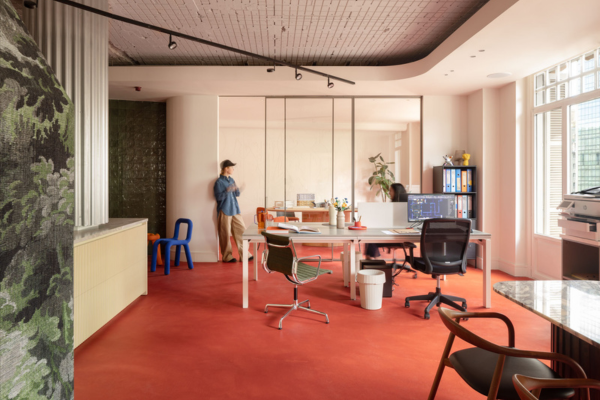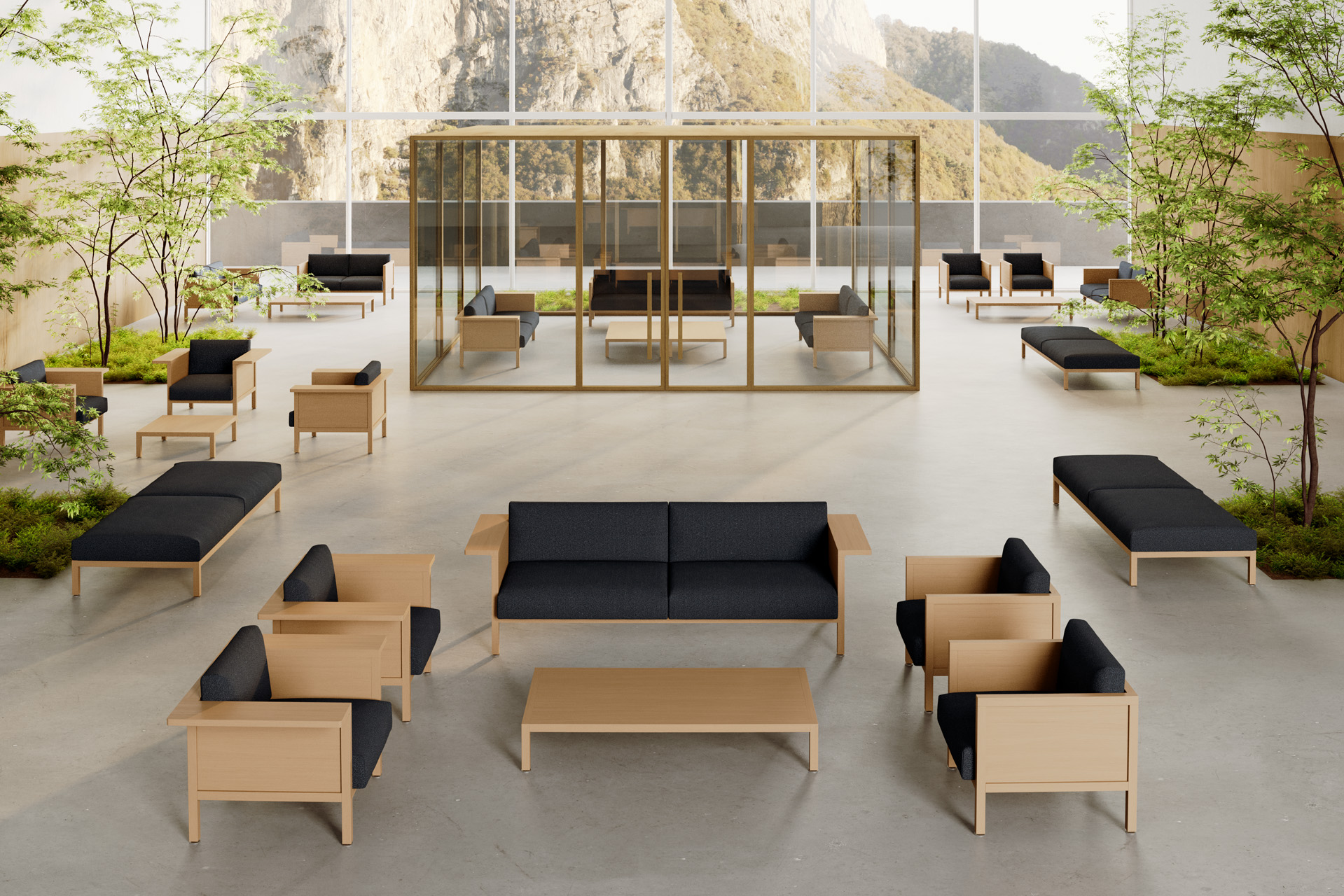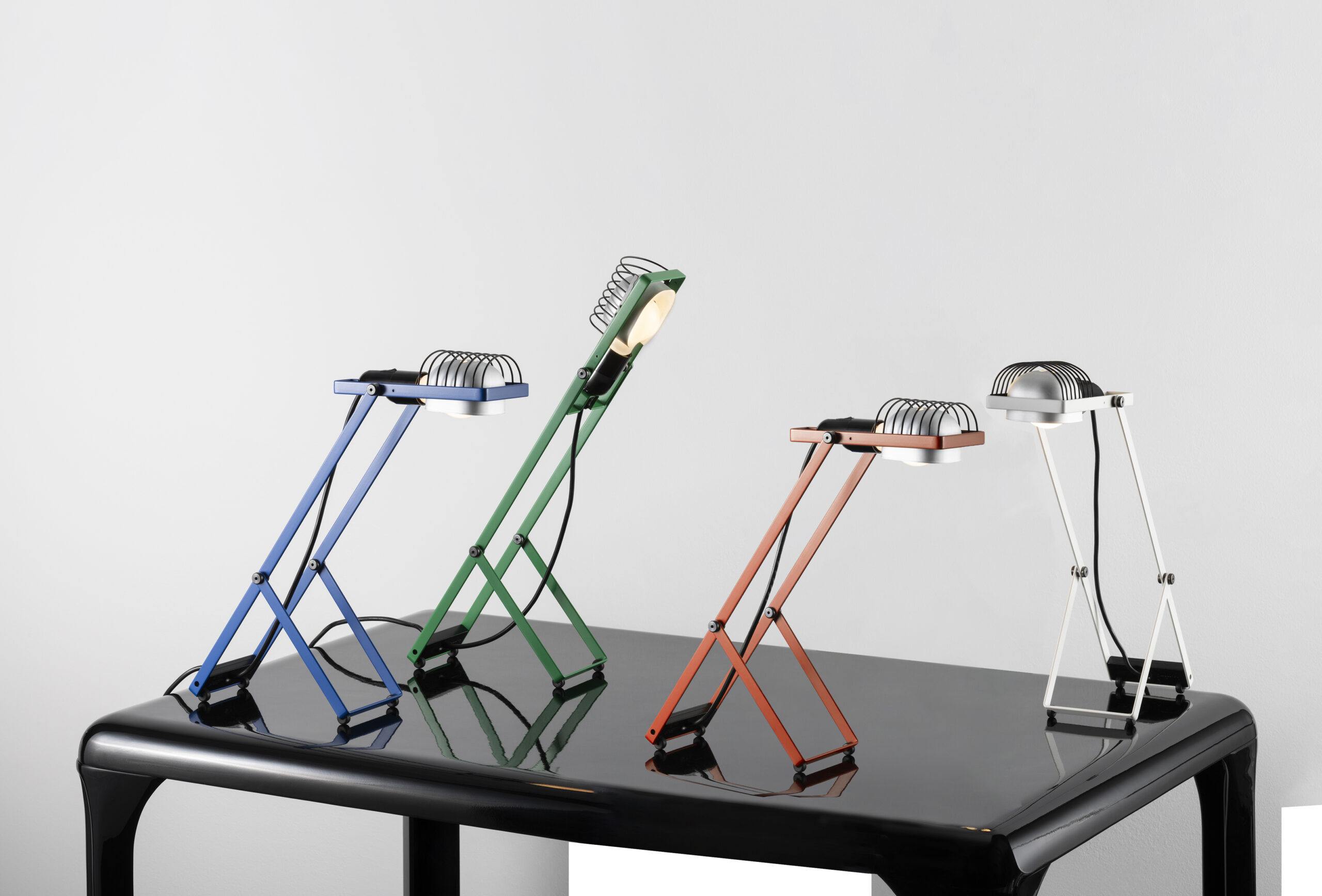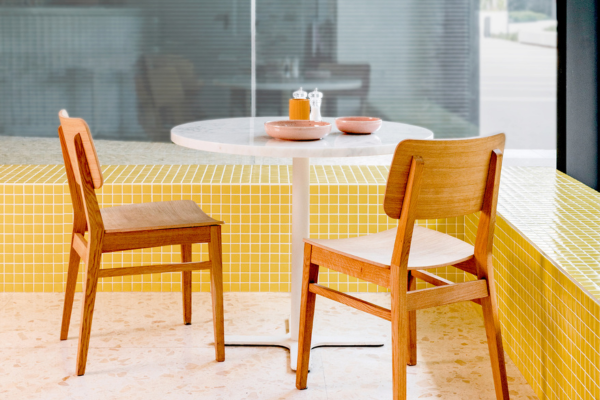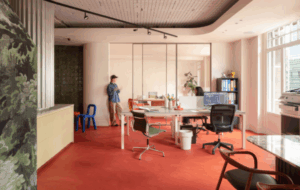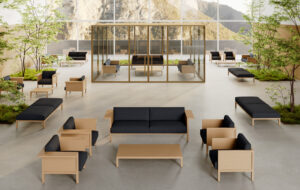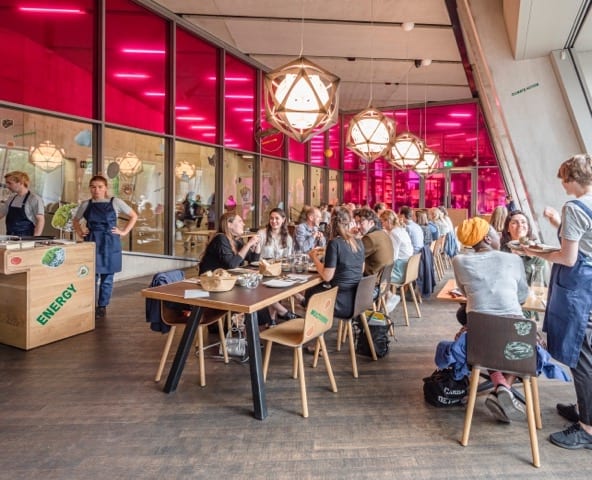 |||
|||
The Tate Modern’s latest opening, Olafur Eliasson: In Real Life, is an exploration of nature, perception through immersive installation art. Many of the works are from the Icelandic-Danish artist’s past, including the fog-filled tunnel of Din blinde passager and the colourful, playful shadows of Your uncertain shadow (colour). However, for the first time, the Tate Modern has extended the immersive sense of the exhibition into the terrace café and restaurant.
Throughout the exhibition run, the restaurant will serve a special vegetarian menu inspired by Studio Olafur Eliasson in Berlin – there, the team sit at long tables, four days a week, to share a lunch made of locally sourced produce. As well as the special menu – which is available to any one visiting the Tate, not just ticket holders – the Terrace Café will feature a visual link to the exhibition: the first floor café has been transformed, with geological stickers Eliasson originally created for suitcases decorating the walls and new furniture, including a long table as used in the Berlin studio. The terrace is also the first – and currently only – location to display a brand new design by Eliasson: the OE Quasi Light, made by Louis Poulsen.
OE Quasi Lights. Photo courtesy of Louis Poulsen
As with so many of Eliasson’s works, the light is inspired by nature. “The quasicrystal is a crystalline form found in nature – it was discovered in the 1980s,” Eliasson explained when OnOffice attended the opening of the Tate Modern exhibition. The outer layer is in the shape of an icosahedron, while the white inner layer is a dodecahedron that appears to float within the aluminium frame. The light comes from LEDs embedded in the frame that point inwards, illuminating the polycarbonate core and giving the impression of a glow from within. “It was important to me that the light is hospitable and warm, a soft light,” Eliasson said.
Read more: Can art in the workplace increase productivity?
Currently at the Tate Terrace, four of the pendant lamps hang above the long table from Eliasson’s Berlin studio. The inner core appears like a sculpture within its frame, fusing mathematics and geometry with beauty. Yet it was the frame rather than the light or shape that proved most challenging, Eliasson says, as using a 90% recycled material required some experimentation to create the robustness and standards required for such a piece. The rest of the light has been designed for future reuse – the core and frame can be disassembled for recycling, or to replace parts.
OE Quasi Light detail shot. Photo courtesy of Louis Poulsen
Longevity is central to the piece, according to Louis Poulsen’s CEO, Søren Mygind Eskildsen. “A good light is functional and beautiful, but most importantly, interacts with and shapes the environment. I believe Eliasson’s OE Quasi Light will become a part of the heritage and history of Louis Poulsen, joining the ranks of our other iconic products.”
The light will be available from 1 September from Louis Poulsen and selected retailers.

